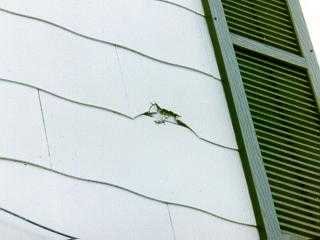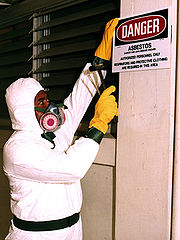Handling Asbestos Siding
Assess the Risk
The mere presence of asbestos siding might not be a hazard in itself. However, past events have shown that the danger comes when the material is damaged, releasing fibers into the air. Because of this, unless there is damage, attempting to remove asbestos can create a risk where none existed to begin with. To find out if you should replace asbestos siding, look for things like tears, abrasions, or water damage.

Weigh Your Options
There are two approaches to dealing with an asbestos problem: repair and replacement.
Repairing damaged asbestos material means treating it so that fibers cannot be released into the air. This usually involves either sealing or covering. Sealing is a treatment that binds the fibers together, while covering merely sets up a physical barrier. For dealing with asbestos siding, this can mean simply putting a new type of siding over top of it.
Removing asbestos siding can be very expensive and is more likely to increase the risk of released fibers than simply repairing. Part of the cost is due to having to rely on a contractor with special training in asbestos removal. Due to the increased cost and associated danger, it is generally advised to treat removal as a last resort, unless required by law.

Our Advice
Individuals should not take it upon themselves to repair asbestos siding; instead they should defer to an accredited professional. If you prefer to do the repairs yourself, however, here are a few precautions you should take:
- Seal off the work area, and take measures to prevent spreading dust. Use plastic sheeting and duct tape, and shut off any heating or air-conditioning systems.
- Wet asbestos siding using a fine mist of water containing a few drops of detergent. Specially designed commercial products are available.
- Small areas can be covered by wrapping special fabric, such as rewettable glass cloth, around it.
- Always use a respirator, wear eye protection, and cover any exposed skin.
Be sure to check with local authorities for any laws regulating asbestos removal and disposal.
 Advertise Here
Advertise Here
*This site does not offer legal advice, and none of the information presented is to be taken as such.
© Copyright Asbestos-Siding.com, all rights reserved.